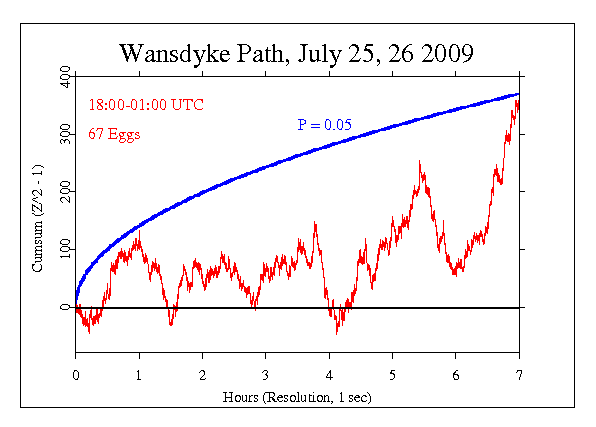|
We have done exploratory assments of data during
meditations centered in Avebury, England, organized by
Joachim Koch and Hans Kyborg in cooperation with Bernd Otto
and others. These had been promising, and
in 2006 the situation was was sufficiently well defined
to specify the event as part of the formal
hypothesis test series. In 2009 again we set the event as a
formal event.
Joachim Koch's description from the previous years helps to
define the event.
For some years I have engaged in research of certain
phenomena in Southern England around the area of Stonehenge
and Avebury. We have learned a lot in the past 12 years
about human interaction with natural fields of all kinds,
including creating and enforcing them. At some point it
became clear that we should focus on experiments with these
interactions, and we decided to place teams at old neolithic
sites to perform coherent meditations.
For the 2009 event Joachim provided the following detailed
description:
The main focus of the Project Wansdyke Path 2009 was between
10:00pm local UK Summer time on July 25th and 01:00 am July 26th.
[In contrast to] the past, this time we knew that only a few in
other parts of
the world would participate in our project because of the
inflation of
announcements of so-called "global meditations" by
individuals via the
Internet. Well...
But what was completely new was the participation of many
individuals and
smaller groups in Central Europe.
So it would be best for you to look at the time frame of
Central Europe
included the UK between 09:00pm Central European Summer Time
on July 25th
and 02:00am Central European Summer Time on July 26th.
We set the formal event to begin 1 hour prior to Joachim's
indication, to include some preliminary focus, from 18:00
UTC on July 25 to 01:00 on July 26th.
The result is Chisquare = 25550.631 on 25200 df, for p = 0.060 and Z = 1.558.

It is important to keep in mind that we have only a tiny
statistical
effect, so that it is always hard to distinguish signal from
noise. This means that every "success" might be largely
driven by chance, and every "null" might include a real
signal overwhelmed by noise. In the long run, a real effect
can
be identified only by patiently accumulating replications of
similar analyses.
|